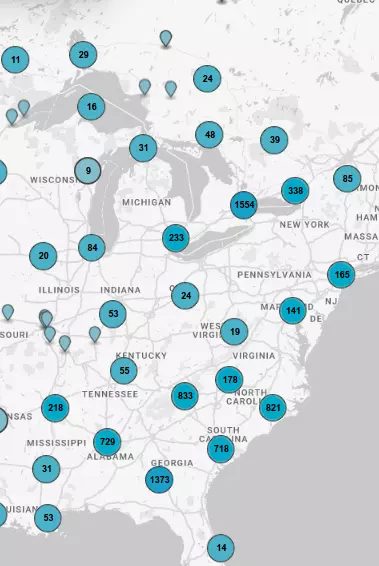Rama Indian Reserve
In 1830 Sir John Colborne, lieutenant-governor of Upper Canada (1828-1836), settled several nomadic bands of Indians on a reserve stretching along the portage between the Atherley Narrows and...
- toronto
- ontario
- alan brown
Raid on Fort Schlosser 1813
At daybreak on July 5, 1813, a British and Canadian force, consisting of some 35 militia and a small detachment of the 49th Regiment, embarked in this vicinity to attack Fort Schlosser....
- toronto
- ontario
- alan brown
Reverend William Proudfoot 1788-1851
An outstanding Presbyterian missionary and church leader, William Proudfoot was born near Peebles, Scotland and educated at the University of Edinburgh. Ordained in 1813, he served in...
- toronto
- ontario
- alan brown
The Right Reverend Isaac Hellmuth 1817-1901
Born in Poland and educated at Breslau University, Hellmuth lived briefly in England before emigrating to Canada in 1844, where, two years later, he was ordained in the Church of...
- toronto
- ontario
- alan brown
Rideau Hall
Built in 1839 for Thomas McKay, Rideau Hall was originally an elegant stone villa set in a picturesque landscaped park. In 1865 it was leased as a temporary residence for the Governor...
- toronto
- ontario
- alan brown
The Reverend Adolphus Egerton Ryerson 1803-1882
This outstanding educationist, journalist and clergyman, the son of an Anglican Loyalist, was born near Vittoria. He entered the Methodist ministry in 1825 serving as a circuit rider...
- toronto
- ontario
- alan brown
"Rockwood" 1842
Rockwood was built in 1842 as a country villa for John Solomon Cartwright (1804-1845). Designed by George Browne, architect of the Kingston City Hall, in a monumental phase of the Regency...
- toronto
- ontario
- alan brown
Rat Portage Post
On Old Fort Island .8 km north of here, the Hudson's Bay Company erected a stockaded fur trading post about 1836. This was the first known European structure within present Kenora. In 1861 the...
- toronto
- ontario
- alan brown
The Reverend Richard Baxter, S.J., 1821-1904
Born in Carlisle, England, Baxter came to Canada as a child. He studied in Toronto and at the Sulpician College in Montreal before becoming, reputedly, the first English-speaking Jesuit novice in...
- toronto
- ontario
- alan brown
The Rush-Bagot Agreement
A naval arms limitation agreement negotiated to demilitarize the Great Lakes and Lake Champlain after the War of 1812, this convention was concluded between the United States and Great Britain,...
- toronto
- ontario
- alan brown
Reverend Thomas Greene at St. Luke's, Wellington Square
St. Luke's Church was built in 1834 on land originally patented by Chief Joseph Brant. Consecrated in 1838 by the Right Reverend C.J. Mountain, Anglican Bishop of Quebec, the church was a simple...
- toronto
- ontario
- alan brown
Robert Samuel McLaughlin (1871-1972)
A famous industrialist and philanthropist, "Colonel Sam" McLaughlin was a founder of the automotive industry in Canada. Involved in the manufacture of carriages and sleighs for his family...
- toronto
- ontario
- alan brown
Richard Pierpoint c.1744-c.1838
One of the first Black settlers in this region, Pierpoint was born in Senegal. At the age of about 16 he was imprisoned and shipped to America where he became the slave of a British officer....
- toronto
- ontario
- alan brown
René-Amable Boucher 1735-1812
Boucher was born at Fort Frontenac (Kingston) where his father, an officer with the French colonial regular troops, was stationed. René- Amable also chose a military career and served in the Seven...
- toronto
- ontario
- alan brown
Reid Mill
This flour mill was built on the Credit River southeast of the village of Streetsville in the mid-1830s by John Beaty and by 1861 had an annual capacity of 12,000 barrels of flour. The...
- toronto
- ontario
- alan brown
Reverend Anthony Burns 1834-1862
Born a slave in Virginia, Burns escaped from servitude in 1854 and fled to Boston, where he was arrested under the Fugitive Slave Act of 1850. Abolitionists came to his defence and serious riots...
- toronto
- ontario
- alan brown
Reverend Peter Jones (1802-1856)
A Mississauga Chief and Methodist minister, the Reverend Peter Jones helped his people survive the impact of European settlement which had brought them close to extinction. As his Band's...
- toronto
- ontario
- alan brown
Robert Tait McKenzie (1867-1938)
Surgeon, educator and sculptor, McKenzie was born in Lanark County, Ontario. After graduating in medicine at McGill University, he became its Medical Director of Physical Training in 1894....
- toronto
- ontario
- alan brown
The Red Brick School
Opened in 1887, this charming two-room brick school, built by local contractor Fred Taber, replaced a smaller wood-frame building. School Section No. 5 in South Crosby is a very early example of...
- toronto
- ontario
- alan brown
Regiopolis College
Regiopolis College, incorporated March 4, 1837, by an Act of the legislature of Upper Canada, opened in the central portion of this building. Its corner-stone was laid by the school's...
- toronto
- ontario
- alan brown
